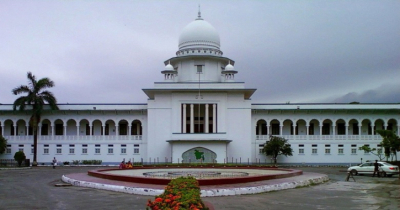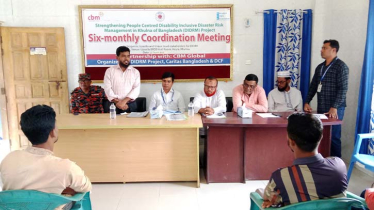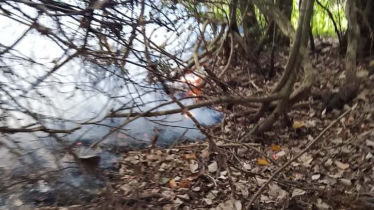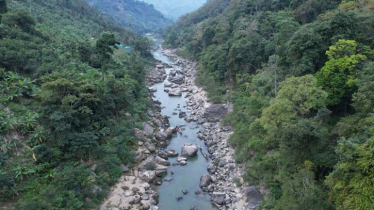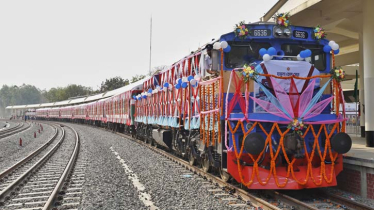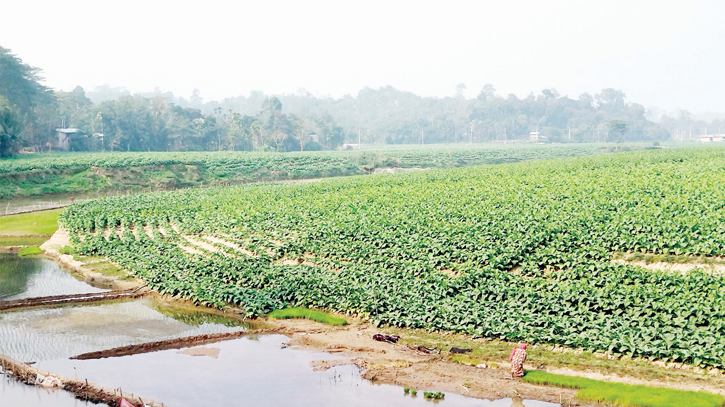
Photo : Messenger
The cultivation of tobacco has turned the picturesque landscapes of fields, riverbanks, hillsides, and residential-school courtyards into a realm of death. Slowly and steadily, the Lama Upazila in the Bandarban district has transformed into a tobacco cultivation paradise over the past 33 years. Since 1991, tobacco cultivation has been spreading its roots in four unions under the Lama Pourashava. With assured support in terms of fertilizers, pesticides, and loans, the dominance of tobacco is escalating day by day. Companies such as Japan Tobacco International, Abdul Khayer Tobacco Co. Ltd., British American Tobacco Bangladesh, and Akij Tobacco Co. Ltd. are enticing farmers into expanding tobacco cultivation.
Several tobacco farmers, company representatives, and reliable sources reveal that these companies have provided cultivation assistance to over 3,000 farmers in the current season alone. Apart from the registered farmers, an additional 500 are engaged in tobacco cultivation. Consequently, tobacco has been cultivated on approximately 9,000 acres of land this year. Tobacco plants have now grown to a height of two to four feet, and soon the leaves will be harvested for processing. However, the environmentalists point out the devastating consequences of tobacco cultivation, including soil degradation, health hazards for farmers, disruption of riverbanks, and significant environmental damage.
Malu Mia, a farmer from the Lama Pourashava under the Lama Upazila, affiliated with BATB (British American Tobacco Bangladesh), states that unlike other tobacco companies, BATB prioritizes the health and well-being of the cultivators. BATB has introduced various modern agricultural tools such as intercultivators, rice seeders, rotavators, and mini power tillers to make cultivation less labor-intensive and more productive. However, local farmers like Nozrul Islam and Shah Jahan Mia, engaged in vegetable farming, express concerns about the increased competition for land and rising costs due to tobacco cultivation.
According to the agriculture office in the Upazila, approximately 810 hectares were cultivated with tobacco last season, and the companies have targeted 900 hectares for the ongoing season, equivalent to 2,223 acres. However, doubts have been raised about the accuracy of these statistics due to the companies surpassing the registered number of cultivators and the land area involved. The environmentalists assert that once the farmers find alternative crops with assured markets and profitability, they will abandon tobacco cultivation.
Exploring different regions, tobacco cultivation is evident in government-owned lands and reserve areas managed by the Forest Department. Despite the government's anti-tobacco stance, the lack of proper supervision and negligence by local administration and agriculture offices have emboldened farmers to engage in tobacco cultivation. Even within 50 feet of rivers and canals, where cultivation is prohibited, farmers continue to grow tobacco.
Looking into the perspective of the tobacco cultivators, it is found that one tobacco farm requires one tobacco barn (Chulili) to process the leaves, and each barn can accommodate four barns of tobacco, amounting to 160 hectares. To produce tobacco from four hectares, around 12 loads are required, and each load takes six days to process. Moreover, it needs 40 maunds of firewood per load, leading to significant deforestation.
Khagendra Chandra Das, the manager of the Lama Depot of Japan Tobacco International, mentions that their company currently has around 278 tobacco farmers. Due to the presence of two other companies, Dhaka Tobacco (BATB) and Japan Tobacco (Akij), the number of farmers associated with their company has decreased. The independent nature of tobacco cultivation is praised by Das, emphasizing the self-reliance of people in the business.
As Lama Upazila becomes the battleground for tobacco cultivation, agricultural expert Ashrafuzzaman from the Lama Upazila agriculture office warns that the increasing trend poses a threat to the local culture and environment. While the government has taken various initiatives to bring back farmers to rice and other crops by offering low-interest agricultural loans and providing agricultural equipment, the effectiveness of these measures is yet to be seen. In the absence of specific laws against tobacco cultivation, the government is unable to take any direct action against it.
Messenger/Fameema

